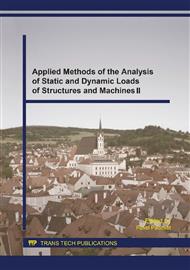p.39
p.47
p.51
p.57
p.61
p.65
p.69
p.73
p.77
An Experimental Analysis of Bending Behavior of Sandwich Constructions for Transport Industry
Abstract:
In this work the mechanical performance of various sandwich constructions with respect to core material were experimentally evaluated. Sandwich structures were made of glass prepreg and three types of plastic core using vacuum bagging, technology traditionally used for production of parts for transport industry. The aim of this study is to analyze the impact of the core material type and its thickness on bending behavior at different environmental temperatures. Moreover, the effect of core layers compared to one layer core of same thickness was determined. Conducted research provided useful information of bending behavior and showed specific failure modes of individual sandwich constructions.
Info:
Periodical:
Pages:
61-64
Citation:
Online since:
February 2016
Authors:
Keywords:
Price:
Сopyright:
© 2016 Trans Tech Publications Ltd. All Rights Reserved
Share:
Citation:


